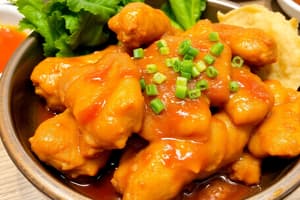Podcast
Questions and Answers
What are presentations primarily used for?
What are presentations primarily used for?
communication tools that can be used as demonstration slectures, speeches, reports, and more
In which situations is tipping not customary?
In which situations is tipping not customary?
- India
- Japan
- China
- Korea (correct)
When drinking alcohol, it's polite to hold your glass with two hands when receiving a drink from an elder or someone of higher status. Additionally, it's common to pour drinks for others rather than pouring for yourself. This is known as drinking ___ etiquette.
When drinking alcohol, it's polite to hold your glass with two hands when receiving a drink from an elder or someone of higher status. Additionally, it's common to pour drinks for others rather than pouring for yourself. This is known as drinking ___ etiquette.
Etiquette
During which period did royal courts in Korea develop elaborate multi-course meals featuring meat, seafood, and fermented foods?
During which period did royal courts in Korea develop elaborate multi-course meals featuring meat, seafood, and fermented foods?
What is the base ingredient of Kimchi, a staple side dish in Korean cuisine?
What is the base ingredient of Kimchi, a staple side dish in Korean cuisine?
In Korean culture, it is customary to use chopsticks for picking up solid foods and spoons for liquid-based dishes.
In Korean culture, it is customary to use chopsticks for picking up solid foods and spoons for liquid-based dishes.
It is considered polite to finish all the ______ on your plate in Korean culture, as leaving ______ behind may imply that you didn't enjoy the meal.
It is considered polite to finish all the ______ on your plate in Korean culture, as leaving ______ behind may imply that you didn't enjoy the meal.
Flashcards are hidden until you start studying
Study Notes
History of Korean Cuisine
- Early Koreans relied on locally available ingredients like rice, barley, and vegetables.
- Kimchi, a fermented dish, likely originated during this period as a way to preserve vegetables during harsh winters.
The Three Kingdoms Period (3rd Century BC - 7th Century AD)
- Royal courts developed elaborate multi-course meals featuring meat, seafood, and fermented foods.
The Goryeo Dynasty (918 - 1392 AD)
- Buddhism promoted vegetarianism, leading to the creation of meatless dishes and the development of fermented soybean pastes like doenjang and gochujang.
The Joseon Dynasty (1392 - 1897 AD)
- The concept of numerous side dishes (banchan) accompanying a main course became a staple of Korean meals during this period.
Modern Era (20th Century - Present)
- The Korean War and rapid industrialization led to changes in food availability and eating habits.
- Instant noodles and processed foods became more common.
Basic Ingredients
- Gochujang: a fermented red chili paste with a savory and spicy flavor, used as a condiment and in cooking.
- Doenjang: a fermented soybean paste with a rich, savory flavor, often used as a base for soups and stews.
- Gochugaru: Korean red pepper flakes, used to add heat and flavor to dishes like kimchi and stews.
- Kimchi: fermented vegetables, typically cabbage or radish, seasoned with chili pepper, garlic, ginger, and other spices.
- Soy sauce: a salty, savory sauce made from fermented soybeans and wheat, used as a seasoning and condiment.
- Sesame oil: a fragrant oil made from sesame seeds, used as a flavoring agent rather than a cooking oil.
- Garlic: a pungent bulb used to add flavor to various dishes.
- Ginger: a root with a spicy and aromatic flavor, commonly used in Korean cooking for its distinct taste and health benefits.
- Rice vinegar: a mild vinegar made from fermented rice, used in marinades, dressings, and dipping sauces.
- Rice: a staple grain in Korean cuisine, served both steamed as a side dish and in various forms like rice cakes and noodles.
Typical Korean Dishes
- Kimchi: a spicy fermented vegetable dish, typically made with cabbage or radish.
- Tteokbokki: a dish made with chewy, sweet rice and fish cakes, mixed with a special red chili and soybean paste.
- Japchae: a stir-fried glass noodle dish made with sweet potatoes, mushrooms, and vegetables.
- Pajeon: a savory pancake dish made with a combination of green onions and carrots, and a dipping sauce typically made with garlic, soy sauce, and honey.
- Hotteok: a sweet pancake dish filled with a mouthwatering syrup made from brown sugar, cinnamon, and peanuts.
- Bibimbap: a mixed rice dish with vegetables, beef, and a fried egg, topped with sesame seeds and a spicy red pepper paste.
- Sundubu Jjigae: a Korean spicy soft tofu stew made with a richer, spicier broth and seasonings of red pepper powder and oil.
Cooking Methods
- Stir-frying (Bokkeum): a quick cooking method used for dishes like kimchi and stir-fried noodles.
- Boiling (Sujeong): a straightforward cooking method used for making noodles, soups, and stews.
- Pan-frying (Jeon): a cooking method used for making dishes like pancakes and fried fish cakes.
- Grilling (Gui): a cooking method used for making dishes like marinated beef and grilled pork.
Fermentation
- Fermentation is a crucial process in Korean cuisine, used for making kimchi and other fermented foods.
- Fermented condiments like gochujang and doenjang are commonly used in Korean cooking.
Meal Time Customs
- Serving style: meals are often served family-style with several dishes placed in the center of the table for everyone to share.
- Seating arrangement: elders are typically seated first, and it's polite to wait for them to start eating before beginning your own meal.
- Using chopsticks and spoons: chopsticks are used for picking up solid foods, while spoons are used for soups, rice, and other liquid-based dishes.
- Respect for elders: it's customary to use both hands when passing dishes or receiving food from elders as a sign of respect.
- Noises while eating: unlike in some Western cultures, it's acceptable to slurp noodles and make other sounds while eating in Korea.
- Finishing food: it's considered polite to finish all the food on your plate, as leaving food behind may imply that you didn't enjoy the meal.
- Tipping: tipping is not customary in Korea and may even be seen as rude in some situations.
- Drinking etiquette: when drinking alcohol, it's polite to hold your glass with two hands when receiving a drink from an elder or someone of higher status, and it's common to pour drinks for others rather than pouring for yourself.
Studying That Suits You
Use AI to generate personalized quizzes and flashcards to suit your learning preferences.




